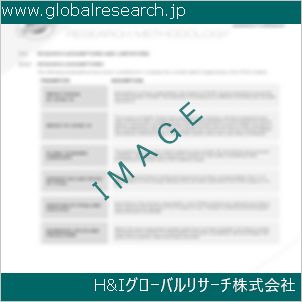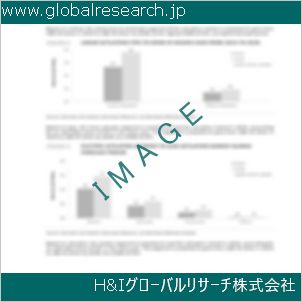Table of Contents
1 Industry Overview of Dimer, Parylene C
1.1 Definition and Specifications of Dimer, Parylene C
1.1.1 Definition of Dimer, Parylene C
1.1.2 Specifications of Dimer, Parylene C
1.2 Classification of Dimer, Parylene C
1.3 Applications of Dimer, Parylene C
1.3.1 Nuclear Application
1.3.2 Non-Nuclear Application
1.4 Industry Chain Structure of Dimer, Parylene C
1.5 Industry Overview and Major Regions Status of Dimer, Parylene C
1.5.1 Industry Overview of Dimer, Parylene C
1.5.2 Global Major Regions Status of Dimer, Parylene C
1.6 Industry Policy Analysis of Dimer, Parylene C
1.7 Industry News Analysis of Dimer, Parylene C
2 Manufacturing Cost Structure Analysis of Dimer, Parylene C
2.1 Raw Material Suppliers and Price Analysis of Dimer, Parylene C
2.2 Equipment Suppliers and Price Analysis of Dimer, Parylene C
2.3 Labor Cost Analysis of Dimer, Parylene C
2.4 Other Costs Analysis of Dimer, Parylene C
2.5 Manufacturing Cost Structure Analysis of Dimer, Parylene C
2.6 Manufacturing Process Analysis of Dimer, Parylene C
3 Technical Data and Manufacturing Plants Analysis of Dimer, Parylene C
3.1 Capacity and Commercial Production Date of Global Dimer, Parylene C Major Manufacturers in 2023
3.2 Manufacturing Plants Distribution of Global Dimer, Parylene C Major Manufacturers in 2023
3.3 R&D Status and Technology Source of Global Dimer, Parylene C Major Manufacturers in 2023
3.4 Raw Materials Sources Analysis of Global Dimer, Parylene C Major Manufacturers in 2023
4 Capacity, Production and Revenue Analysis of Dimer, Parylene C by Regions, Types and Manufacturers
4.1 Global Capacity, Production and Revenue of Dimer, Parylene C by Regions 2019-2024
4.2 Global and Major Regions Capacity, Production, Revenue and Growth Rate of Dimer, Parylene C 2019-2024
4.3 Global Capacity, Production and Revenue of Dimer, Parylene C by Types 2019-2024
4.4 Global Capacity, Production and Revenue of Dimer, Parylene C by Manufacturers 2019-2024
5 Price, Cost, Gross and Gross Margin Analysis of Dimer, Parylene C by Regions, Types and Manufacturers
5.1 Price, Cost, Gross and Gross Margin Analysis of Dimer, Parylene C by Regions 2019-2024
5.2 Price, Cost, Gross and Gross Margin Analysis of Dimer, Parylene C by Types 2019-2024
5.3 Price, Cost, Gross and Gross Margin Analysis of Dimer, Parylene C by Manufacturers 2019-2024
6 Consumption Volume, Consumption Value and Sale Price Analysis of Dimer, Parylene C by Regions, Types and Applications
6.1 Global Consumption Volume and Consumption Value of Dimer, Parylene C by Regions 2019-2024
6.2 Global and Major Regions Consumption Volume, Consumption Value and Growth Rate of Dimer, Parylene C 2019-2024
6.3 Global Consumption Volume and Consumption Value of Dimer, Parylene C by Types 2019-2024
6.4 Global Consumption Volume and Consumption Value of Dimer, Parylene C by Applications 2019-2024
6.5 Sale Price of Dimer, Parylene C by Regions 2019-2024
6.6 Sale Price of Dimer, Parylene C by Types 2019-2024
6.7 Sale Price of Dimer, Parylene C by Applications 2019-2024
6.8 Market Share Analysis of Dimer, Parylene C by Different Sale Price Levels
7 Supply, Import, Export and Consumption Analysis of Dimer, Parylene C
7.1 Supply, Consumption and Gap of Dimer, Parylene C 2019-2024
7.2 Global Capacity, Production, Price, Cost, Revenue, Supply, Import, Export and Consumption of Dimer, Parylene C 2019-2024
7.3 USA Capacity, Production, Price, Cost, Revenue, Supply, Import, Export and Consumption of Dimer, Parylene C 2019-2024
7.4 EU Capacity, Production, Price, Cost, Revenue, Supply, Import, Export and Consumption of Dimer, Parylene C 2019-2024
7.5 China Capacity, Production, Price, Cost, Revenue, Supply, Import, Export and Consumption of Dimer, Parylene C 2019-2024
7.6 Japan Capacity, Production, Price, Cost, Revenue, Supply, Import, Export and Consumption of Dimer, Parylene C 2019-2024
8 Major Manufacturers Analysis of Dimer, Parylene C
8.1 Manufacturer One
8.1.1 Company Profile
8.1.2 Product Picture and Specifications
8.1.2.1 Type I
8.1.2.2 Type II
8.1.2.3 Type III
8.1.3 Capacity, Production, Price, Cost, Gross and Revenue
8.1.4 Contact Information
8.2 Manufacturer Two
8.2.1 Company Profile
8.2.2 Product Picture and Specifications
8.2.2.1 Type I
8.2.2.2 Type II
8.2.2.3 Type III
8.2.3 Capacity, Production, Price, Cost, Gross and Revenue
8.2.4 Contact Information
8.3 Manufacturer Three
8.3.1 Company Profile
8.3.2 Product Picture and Specifications
8.3.2.1 Type I
8.3.2.2 Type II
8.3.2.3 Type III
8.3.3 Capacity, Production, Price, Cost, Gross and Revenue
8.3.4 Contact Information
8.4 Manufacturer Four
8.4.1 Company Profile
8.4.2 Product Picture and Specifications
8.4.2.1 Type I
8.4.2.2 Type II
8.4.2.3 Type III
8.4.3 Capacity, Production, Price, Cost, Gross and Revenue
8.4.4 Contact Information
8.5 Manufacturer Five
8.5.1 Company Profile
8.5.2 Product Picture and Specifications
8.5.2.1 Type I
8.5.2.2 Type II
8.5.2.3 Type III
8.5.3 Capacity, Production, Price, Cost, Gross and Revenue
8.5.4 Contact Information
…
9 Marketing Trader or Distributor Analysis of Dimer, Parylene C
9.1 Marketing Channels Status of Dimer, Parylene C
9.2 Traders or Distributors with Contact Information of Dimer, Parylene C by Regions
9.3 Ex-work Price, Channel Price and End Buyer Price Analysis of Dimer, Parylene C
9.4 Regional Import, Export and Trade Analysis of Dimer, Parylene C
10 Industry Chain Analysis of Dimer, Parylene C
10.1 Upstream Major Raw Materials Suppliers Analysis of Dimer, Parylene C
10.1.1 Major Raw Materials Suppliers with Contact Information Analysis of Dimer, Parylene C
10.1.2 Major Raw Materials Suppliers with Supply Volume Analysis of Dimer, Parylene C by Regions
10.2 Upstream Major Equipment Suppliers Analysis of Dimer, Parylene C
10.2.1 Major Equipment Suppliers with Contact Information Analysis of Dimer, Parylene C
10.2.2 Major Equipment Suppliers with Product Pictures Analysis of Dimer, Parylene C by Regions
10.3 Downstream Major Consumers Analysis of Dimer, Parylene C
10.3.1 Major Consumers with Contact Information Analysis of Dimer, Parylene C
10.3.2 Major Consumers with Consumption Volume Analysis of Dimer, Parylene C by Regions
10.4 Supply Chain Relationship Analysis of Dimer, Parylene C
11 Development Trend of Analysis of Dimer, Parylene C
11.1 Capacity, Production and Revenue Forecast of Dimer, Parylene C by Regions and Types
11.1.1 Global Capacity, Production and Revenue of Dimer, Parylene C by Regions 2024-2029
11.1.2 Global and Major Regions Capacity, Production, Revenue and Growth Rate of Dimer, Parylene C 2024-2029
11.1.3 Global Capacity, Production and Revenue of Dimer, Parylene C by Types 2024-2029
11.2 Consumption Volume and Consumption Value Forecast of Dimer, Parylene C by Regions, Types and Applications
11.2.1 Global Consumption Volume and Consumption Value of Dimer, Parylene C by Regions 2024-2029
11.2.2 Global and Major Regions Consumption Volume, Consumption Value and Growth Rate of Dimer, Parylene C 2024-2029
11.2.3 Global Consumption Volume and Consumption Value of Dimer, Parylene C by Types 2024-2029
11.2.4 Global Consumption Volume and Consumption Value of Dimer, Parylene C by Applications 2024-2029
11.3 Supply, Import, Export and Consumption Forecast of Dimer, Parylene C
11.3.1 Supply, Consumption and Gap of Dimer, Parylene C 2024-2029
11.3.2 Global Capacity, Production, Price, Cost, Revenue, Supply, Import, Export and Consumption of Dimer, Parylene C 2024-2029
11.3.3 USA Capacity, Production, Price, Cost, Revenue, Supply, Import, Export and Consumption of Dimer, Parylene C 2024-2029
11.3.4 EU Capacity, Production, Price, Cost, Revenue, Supply, Import, Export and Consumption of Dimer, Parylene C 2024-2029
11.3.5 China Capacity, Production, Price, Cost, Revenue, Supply, Import, Export and Consumption of Dimer, Parylene C 2024-2029
11.3.6 Japan Capacity, Production, Price, Cost, Revenue, Supply, Import, Export and Consumption of Dimer, Parylene C 2024-2029
12 New Project Investment Feasibility Analysis of Dimer, Parylene C
12.1 New Project SWOT Analysis of Dimer, Parylene C
12.2 New Project Investment Feasibility Analysis of Dimer, Parylene C
13 Conclusion of the Global Dimer, Parylene C (CAS 10366-05-9) Industry 2024 Market Research Report
| ※参考情報 パリレンC二量体は、特殊なポリマーの一種で、さまざまな工業用途で使用される重要な材料です。このポリマーの定義、特徴、種類、用途、関連技術について詳しくご紹介いたします。 パリレンCは、化学的にはポリ(パラ-メチルクロロシラン)であり、一般的には高い絶縁性と優れた耐薬品性を持つことで知られています。パリレンCの二量体は、分子構造において二つの単位が結合された形を持ち、この形態が特に独自の物理的および化学的特性を引き出しています。 パリレンCの特徴として、まず挙げられるのはその優れた絶縁特性です。この特性は電子機器や回路基板の保護に非常に重要であり、上質な絶縁膜を形成することができます。また、耐湿性に優れており、高温多湿の環境でも安定した性能を維持します。さらに、化学的な耐久性も高く、多くの酸や溶媒に対して非反応的です。このため、電子部品や医療機器など、さまざまな分野での利用が促進されています。 パリレンCにはいくつかの種類がありますが、代表的なものとして、パリレン N、パリレン C、パリレン Dの三種類が挙げられます。パリレン Nは最も基本的な構造を持つものであり、多くの材料に適用されてきましたが、パリレン Cに比べて耐薬品性や耐熱性が劣ります。パリレン Dは、パリレン Cにさらにフッ素原子を付加した構造を持ち、これによりより高い耐薬品性を実現しています。 用途については、パリレンCはその高い絶縁性と熱的安定性から、電子機器や半導体のコーティングに広く利用されています。具体的には、マイクロエレクトロニクス分野での基板コーティング、高性能なセンサー、ミニチュア機械部品の保護などに使用されており、特に aerospace(航空宇宙)やmedical(医療)製品に対して高い要求がある場合に重宝されます。また、表面の滑らかさから光学系の保護膜、さらには防水防塵のコーティングにも適用されています。 関連技術としては、パリレンCのコーティングプロセスが重要です。一般的には、真空蒸着技術を用いてパリレンを蒸発させ、基材に均一にコーティングする方法が取られます。このプロセスにおいて、基材の形状や大きさにかかわらず、均一な膜厚を持つコーティングが可能であり、複雑な形状の部品にも適応できます。加えて、パリレンCは温度変化に強く、広範な温度範囲で安定した性能を発揮します。 さらに、パリレンCの環境への影響についても考慮が必要です。従来のコーティング材料に比べ、より環境に優しい材料として注目されています。リサイクルの可能性や新しい製造技術の導入によって、今後の持続可能な開発に貢献することが期待されています。 最後に、パリレンC二量体はその特性から、電子機器の進化や新たな技術の開発に寄与しており、今後もさまざまな分野での利用が拡大することが期待されています。ポリマー科学とエンジニアリングの進展により、さらに新しい用途が開発され、堅牢で高機能な製品の実現に向けて重要な役割を果たすでしょう。 |
❖ 免責事項 ❖
http://www.globalresearch.jp/disclaimer












